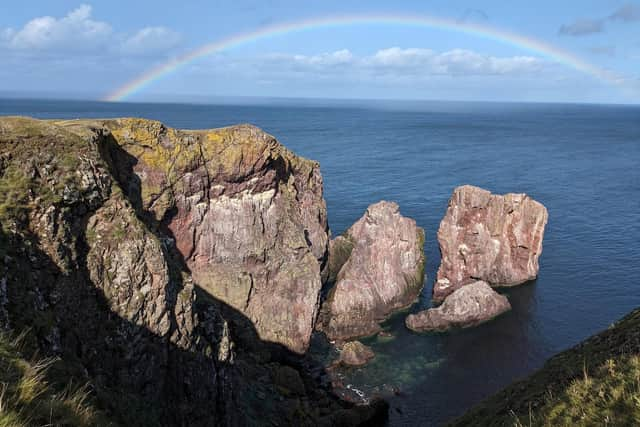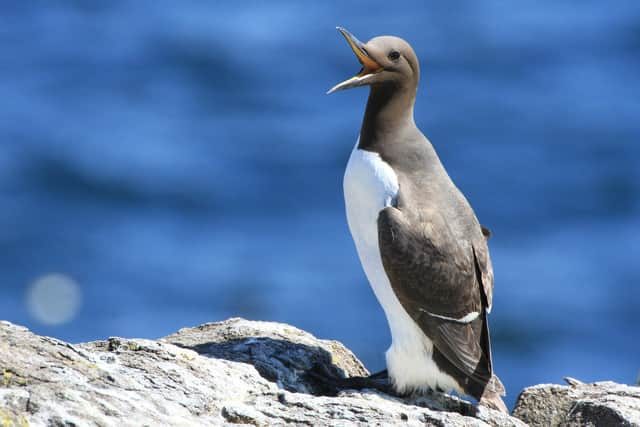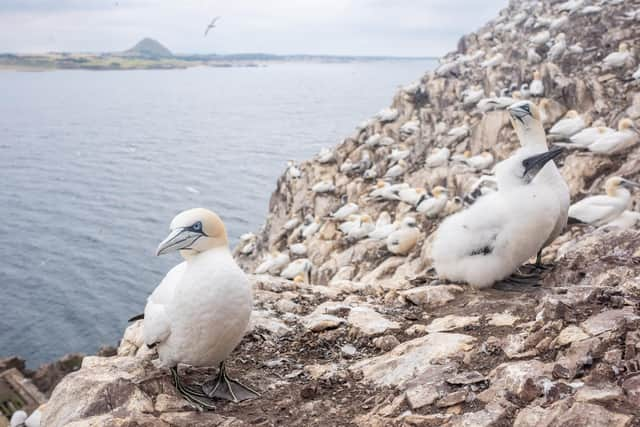Wind farm Scotland: UK’s biggest offshore wind farm Berwick Bank needs rethink to save Forth seabirds, conservationists warn
The proposed wind farm, in the outer Firth of Forth, will have more than 300 giant turbines stretched across an area four times larger than Edinburgh.
If built, the 4.1 gigawatt Berwick Bank “super project” would be the largest offshore wind farm in the UK, capable of powering over six million homes – more than double the number in Scotland.
Advertisement
Hide AdAdvertisement
Hide AdThe Scottish Government has set out a goal to deliver up to 11GW of offshore wind capacity by 2030 as part of the national target to reach net zero climate emissions by 2045.
Electricity from Berwick Bank could increase Scotland’s overall renewable energy capacity by almost a third, according to the developer SSE Renewables, which has applied to the Scottish Government’s Energy Consents Unit for planning permission.
But National Trust for Scotland, RSPB Scotland, Scottish Seabird Centre and Scottish Wildlife Trust are concerned about “unacceptable damage to nature” posed by the giant scheme, which would be sited around 20 miles from St Abb’s Head national nature reserve, in the Scottish Borders, and Bass Rock, in East Lothian. Those two sites are important breeding grounds for the likes of gannets, puffins, kittiwakes, guillemots, razorbills and puffins, many of which have been declining.
The organisations have written to energy minister Gillian Martin to highlight their worries before a decision on the development is made. The conservation charities have criticised the choice of site, which they say is too close to internationally significant seabird colonies and special protection areas.


They have also accused SSE Renewables of failing to include adequate steps to mitigate the threat turbines will pose.
According to surveys, Berwick Bank could have higher seabird death rates than other offshore schemes.
National Trust for Scotland ambassador Dr Cal Major urged ministers to reject the proposal and called for SSE Renewables to move the scheme to a less ecologically damaging location.


“Our conservation charity supports the expansion of offshore wind farms, which are a vital component of Scotland’s journey to net zero,” she said.
Advertisement
Hide AdAdvertisement
Hide Ad“However, they must be sited in the right places for nature. This location – off St Abb’s Head with its precious seabird colonies – is clearly not the right site.
“Nature and biodiversity are vital assets in tackling climate change and we must make sure we don’t put them at irreversible or unnecessary risk in transitioning to net zero.”


Susan Davies, chief executive of the Scottish Seabird Centre, said: “We are facing a nature crisis and must ensure that green energy is secured in ways which do not contribute to further loss.”
A SSE Renewables spokesperson said: “Nationally significant projects like Berwick Bank will be vital in delivering Scotland’s offshore wind targets and ensuring the country fulfils its potential as a global leader in tackling both the climate and nature crises.
“As part of our consent application for Berwick Bank, we have put forward a comprehensive package of mitigation and compensatory measures to support this and look forward to working with environmental organisations and others as this important project delivers for Scotland.”
Comments
Want to join the conversation? Please or to comment on this article.